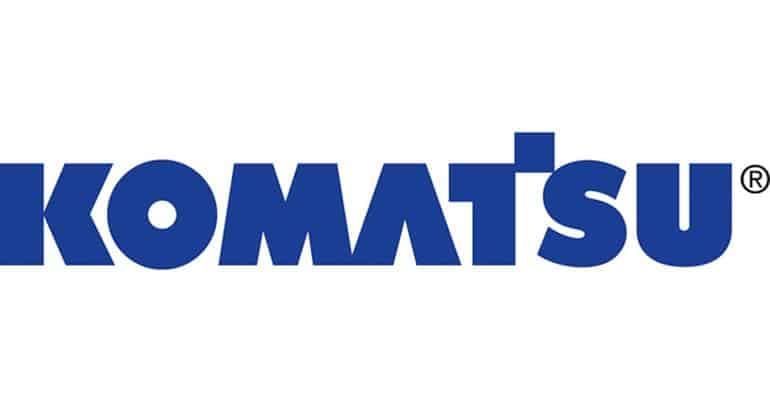
Komatsu is a Japanese multinational corporation that manufactures construction, mining, forestry, and military equipment, as well as industrial equipment such as press machines, lasers, and thermoelectric generators. It is headquartered in Minato City (Tokyo, Japan). The word komatsu literally can be translated as "small pine tree". Komatsu got its name from the name of the city where its history began. According to legend, the city, in turn, got its name from one of the Japanese rulers who allegedly planted a small pine tree near a flowering garden. In Japanese it sounded "sono ne komatsubara" (small pine tree near the garden). Later, the name was shortened to the word Komatsu. Komatsu is the world's second largest manufacturer of construction and mining equipment after Caterpillar. The company derives more than 70 percent of its revenue from construction and mining equipment, including bulldozers, dump trucks, hydraulic excavators, mobile debris crushers, motor graders, all-terrain cranes, tunnel boring machines and wheel loaders. Komatsu also has a division that produces electronics, electronic materials, including silicon wafers and polycrystalline silicon used for semiconductor production, factory and office automation equipment, and peripheral equipment related to local area networking. Komatsu divisions manufacture a wide range of other products, including metal forging and stamping presses, machine tools, forklifts, armored personnel carriers and other defense equipment, recycling plants, prefabricated office buildings, and outdoor power equipment.
The period from 1900 to 1960.
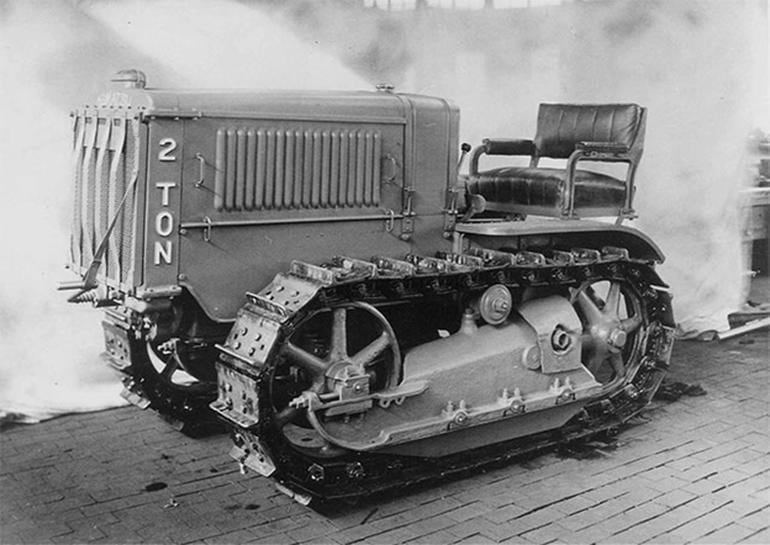
Komatsu originated in 1894 when the Takeuchi Mining Company was founded. The main development took place in 1917, during World War I, when the Komatsu Iron and Steel Works was established to produce mining equipment and machines for mining development. The date of birth of Komatsu Ltd. is May 13, 1921. On that day, Mr. Meitaro Takeuchi, having separated from the main company, established his own repair and construction workshop, in which he himself acted as both chief engineer and president of the company. In 1924, Meitaro Takeuchi built his first 450-ton belt-forming press. During the 1920s and 1930s, the firm became a major manufacturer. machine tools and pumps, including the development of a metal press in 1924 and the first agricultural tractor in 1931. In October 1935, Komatsu would begin producing high-grade alloys and products made from them, and in November '41 it would begin producing hydraulic presses.
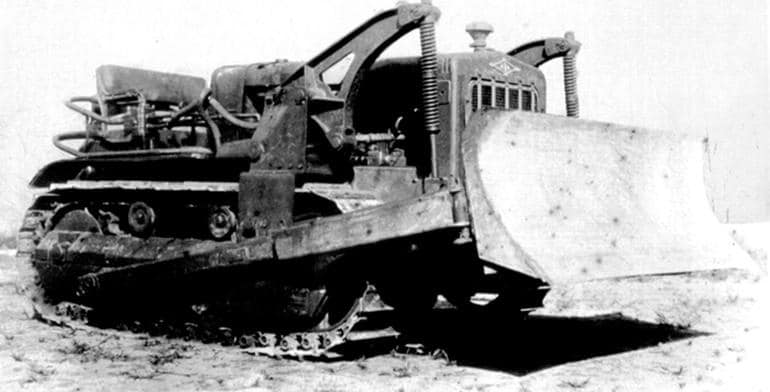
During World War II, the company expanded by supplying the Navy with anti-aircraft artillery shells and bulldozers. Komatsu's first major product after the war was the redesigned D50 bulldozer, which rolled off the assembly line in 1947. A year later, diesel engines were produced, and in 1952, production of motor graders would begin, which would become the first construction equipment to be shipped for export.
The firm's international sales activities began in 1955 when construction equipment and presses were shipped outside the country. In 1958, an agreement between the firm and the Government of India to manufacture tractors began in India. Three years later, another license agreement was signed with the American manufacturer Cummins Engine Company to manufacture and sell diesel engines.
The period from 1960 to 1980.
By the early 1960s, the firm had grown to the point where a new headquarters was needed, and the Komatsu building was constructed in Tokyo. In 1964, the firm received the Deming Quality Award, named in honor of William Edwards Deming, the American quality guru whose work on quality control between 1950 and 1952 became the bible of Japanese manufacturing.
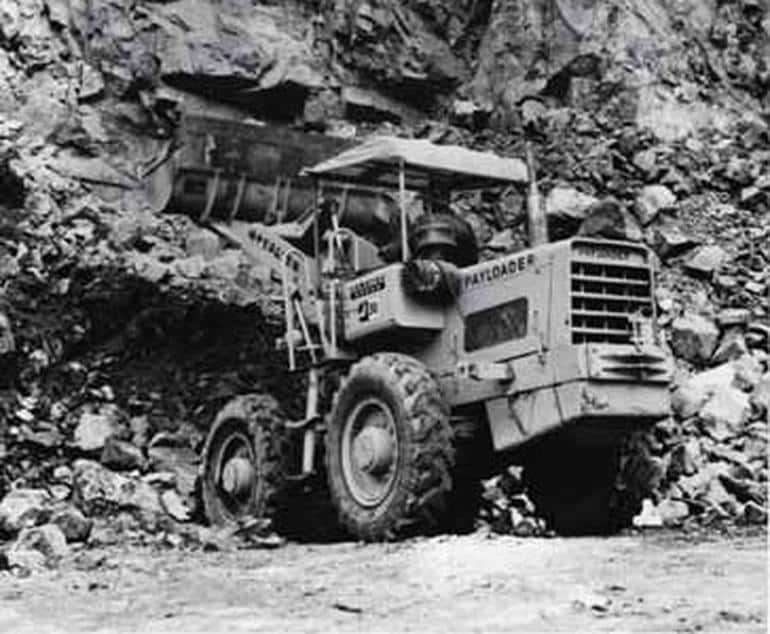
The 1960s saw economic growth in Japan as a result of the Vietnam War, and Komatsu's expansion continued apace. At the end of the decade, a new engine plant began production in Japan, a radio-controlled bulldozer was introduced, and a technical research center was established. In 1967, the company established its first overseas subsidiary, NV Komatsu Europe SA, which was based in Belgium. Over the next 20 years, Komatsu grew from a small local manufacturer to a serious competitor in the global construction market. In 1970, the firm began its first direct investment in the United States by founding Komatsu America Corporation. Other overseas facilities in Singapore, Australia, Mexico, Brazil, and China soon followed. Komatsu began manufacturing bulldozers in Brazil in 1975, marking the first production of construction equipment outside of Japan. In 1981, Komatsu was honored with the Japanese Quality Control Award for outstanding product quality. In 1985, after a series of negotiations with Tennessee partners, Komatsu purchased an empty 55-acre plant in Chattanooga, reflecting the company's decision to challenge its main competitor Caterpillar in its home market. In 1988, Komatsu strengthened its competitive advantage in the U.S. market by forming a joint venture with Dresser Industries, Inc., Komatsu Dresser Company. This venture included Komatsu's two U.S. subsidiaries and Dresser's construction equipment division, making it the second largest manufacturer of construction equipment in the United States. This merger allowed Komatsu to move the assembly of its construction equipment to the United States, utilizing Dresser plants that were operating at 50 percent capacity while Komatsu could not fulfill all of its orders.
The period from 1990 to 2000.
In 1993, Komatsu, together with Cummins, established two joint ventures to manufacture and sell diesel engines. The Japanese division was set up to produce small Cummins engines, while the U.S. division was set up to produce large Komatsu engines. The key to Komatsu's continued growth was its diversification into new markets, including the construction business and electronics, which became Komatsu's second most important business. To expand its presence in this area, in 1993 Komatsu entered into a strategic alliance with Applied Materials, Inc. a U.S. manufacturer of computer display panels. Komatsu invested tens of millions of dollars in a 50% stake in a new joint venture with an American company. By 1995, the venture, called Applied Komatsu Technology Inc. had become a competitive force in the Japanese computer liquid crystal display market. Meanwhile, in 1994, Komatsu entered the local area network (LAN) equipment market, beginning production of two types of hubs and a print server.
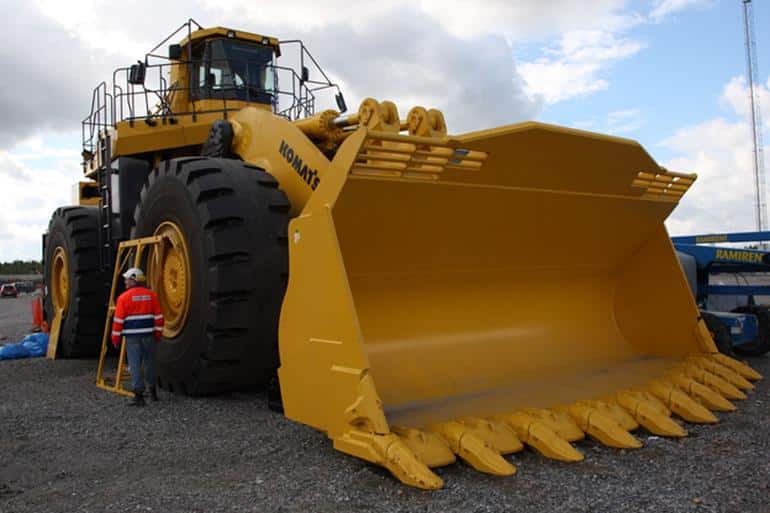
In the mid-1990s, Komatsu continued to push to expand its core construction business worldwide, and due to the massive earthquake in the city of Kobe in January 1995, Komatsu's domestic production surged. By 1995, Komatsu had 15 plants worldwide in ten countries outside Japan, and the company opened new joint ventures in Thailand, Vietnam, and China. In January 1996, Komatsu merged with Mannesmann Demag AG to form Demag Komatsu GmbH, a German company that designed and manufactured extra-large hydraulic excavators for the global mining industry. Komatsu had already entered the mining market through its former joint venture with Dresser, which brought the company's Haulpak line of mining dump trucks. The desire to capture a larger share of the growing construction equipment market in Southeast Asia prompted Komatsu to establish Komatsu Asia & Pacific Pte. in Singapore in mid-1996 to coordinate and expand its operations in the region. That same year, the company also began manufacturing construction equipment in Thailand, giving it two production bases in Asia, and Indonesia. In early 1998, Komatsu, together with India's Larsen & Toubro Ltd. formed Bangalore-based L & T-Komatsu Limited to manufacture Komatsu hydraulic excavators and sell them in India and border countries. Around the same time, Cummins Engine and Komatsu formed a third joint venture, a Japanese firm, Industrial Power Alliance, Ltd. based in Japan. This venture was a continuation of the previous ones and was created to research and develop a new generation of industrial diesel engines. The late 1990s and early 2000s led to a sharp decline in the company's fortunes. One factor was the effects of the Asian economic crisis that erupted in mid-1997 and halted rapid growth in Southeast Asia. At the same time, the already suffering Japanese economy fell into a sharp recession, prompting Komatsu customers to reduce their orders for construction equipment.
The period from 2000 to 2100.
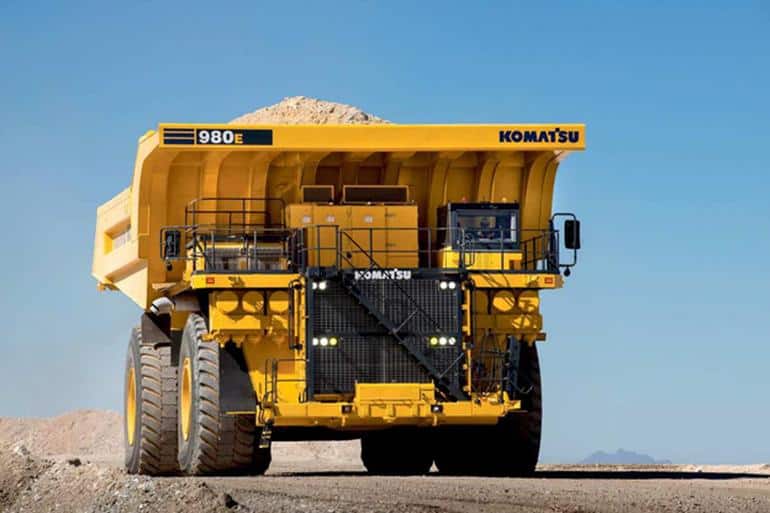
Although Komatsu returned to profit in fiscal 2000 and 2001, the recovery was short-lived. During these two years, the company formed additional joint ventures. In February 2000, an agreement was reached with Germany's Linde AG for global cooperation in the production and marketing of forklifts and related products. Komatsu joined Ushio Inc. of Japan in August 2000 to form a joint venture called Gigaphoton Inc. to develop, manufacture, and market excimer lasers used as lithography tools in semiconductor manufacturing. In December 2000, Komatsu acquired Hensley Industries, Inc. a U.S. manufacturer of components for construction and mining equipment.
From 2010 to the present day
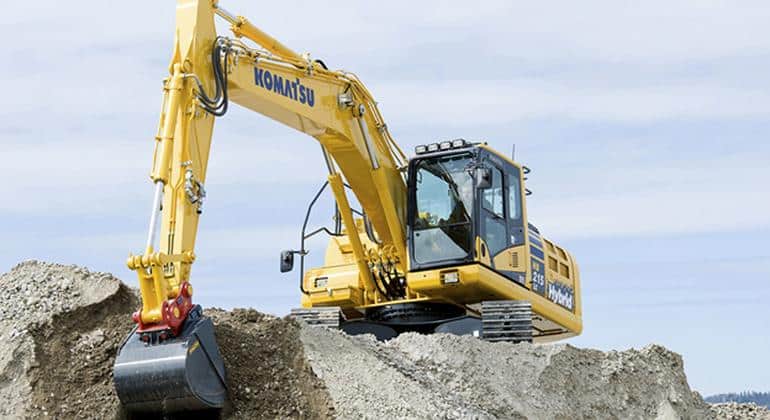
The hybrid hydraulic excavator uses on average 25% less fuel than the standard version. The system combines a newly developed electric motor (which drives the upper swivel), an energy generator, a condenser and a diesel engine. The basic principle of the system is that energy is generated when the upper pivot rotates, then the energy stored in the capacitor is used to maintain power when the engine increases speed.
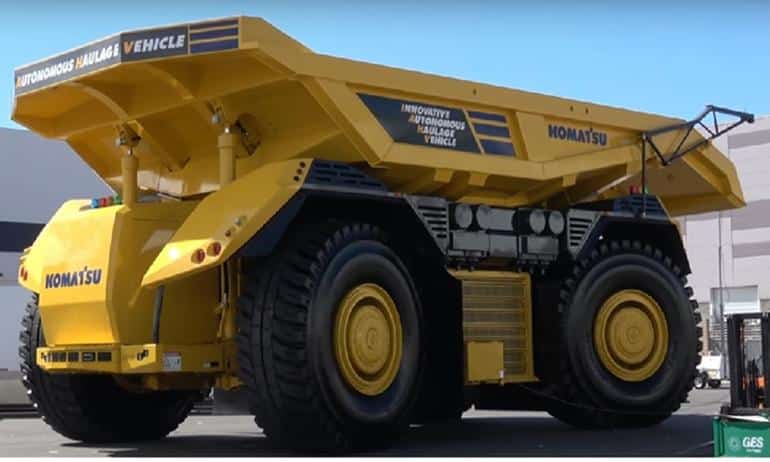
The latest model of Komatsu's autonomous mining dump truck fully embraces the concept of unmanned driving. Developers have abandoned the cab in favor of a design that optimizes load distribution and makes no distinction between forward and reverse movements. The autonomous trucks include controls, support wireless networks and provide obstacle detection while traveling autonomously. The new 2014 kW (2,700 hp) model of the "Innovative Autonomous Truck" is 15 meters long and takes the next step in the evolution of vehicles. With no rearview mirror, the truck moves forward and backward equally efficiently. The refusal to turn allows for greater productivity and less wear and tear on the huge 8.5-meter diameter tires. The dump truck has a payload capacity of 230 tons and reaches a top speed of 64 km/h.
Thank you for reading this article to the end! There will be a lot of interesting things in the next publications. See you soon dear readers.